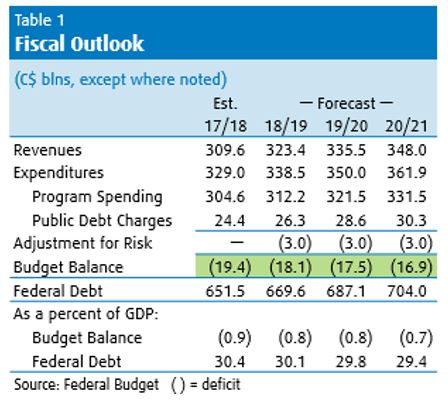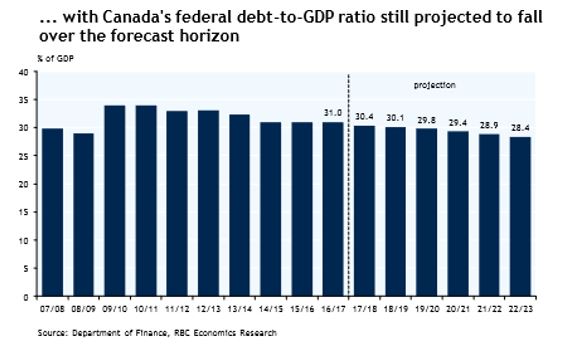The Canadian government brought down its latest budget on Feb. 28th. As has become the custom, there were very few surprises in the budget statement since the government widely indicated in advance its main spending priorities.
Last year’s 3% growth in the economy provided the government with an unexpected boost to revenues in FY 18/19. The Canadian economy is expected to grow considerably slower in 2018 (2.5%) than in 2017, so a similarly strong revenue expansion in FY 19/20 is less likely to emerge.
The budget estimates have a $3 billion annual contingency cushion, so the actual deficit projections will likely be realized.
Even with the $3 billion contingency reserve, this year’s (FY18/19) deficit is estimated at only 0.8% of nominal GDP, which represents the lowest budget deficit among the G7 group of countries. The budget deficit is projected to stay in this low range over the next two years.
The federal debt to GDP ratio also continues to decline gradually over the forecast horizon, reaching 28.4% in FY 2022–23. According to the IMF, Canada’s net debt-to-GDP ratio (which includes all governments) is by far the lowest among G7 countries and less than half the G7 average.
The economic assumptions underlying this Budget document seem eminently reasonable. The document assumed real GDP growth of 3% in 2017, 2.2% in 2018, 1.6% in 2019 and 1.7% in 2020.
The projections for the growth in nominal GDP, which effectively is the broadest measure of Canada’s tax base, was revised down to 5.2% in 2017 to be followed by only 4% growth in 2018 and 3.5% growth in 2019.
















Leave A Comment